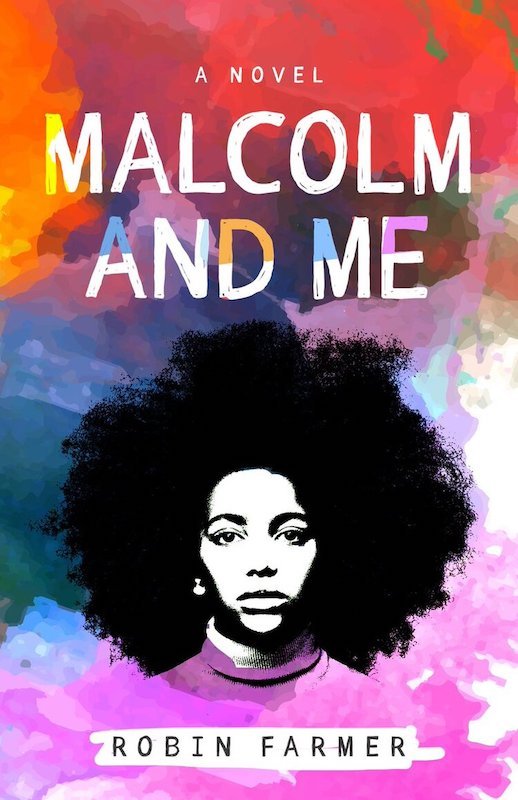
Today’s guest post is by national award–winning journalist Robin Farmer (@sonewsy), author of the YA novel Malcolm and Me.
I never fancied myself a fantastic writer. What I do believe I excel at is the ability to capture the emotional truth(s) of a character, scene, chapter, and overall story.
Think about your favorite novels and how they made you feel. Something stirred and lingered, right? You felt—and likely still do—the uncertainty, rage, joy and love that the characters felt. Perhaps your perspective even shifted as a result.
Defining emotional truth
Emotional truth is elusive and difficult to capture. No standard definition exists. Here’s my crack at it: Emotional truth allows readers to feel a certain way about the experiences of people who may lead different lives from them. It’s the lens that allows us to see ourselves in a story that results in a heartfelt connection to a fictional narrative. Emotional truth transcends facts.
What I value most is that emotional truth engenders empathy.
Fostering empathy is the main reason I infuse emotional truth in my work. In these increasingly polarized times, it’s clear empathy is in short supply. Several years ago a report found 40 percent of college freshmen lacked empathy. Reading that left me deeply disturbed. Future leaders need empathy to understand the needs of others. Without it, well…take a look around. Empathetic leaders can build a sense of trust and strengthen their relationships, which can lead to greater collaboration. I’ll leave that here.
I learned the techniques to capture emotional truth during my first fellowship through the Education Writers Association more than twenty years ago. Jon Franklin, author of Writing for Story, served as an advisor to my narrative nonfiction project examining survival tactics of gifted Black students at troubled schools, where being smart carried a stigma. I was intimidated to work with the two-time Pulitzer winner, but he read my three-day series and said, “You got it right.”
How to tap into emotional truth in your story
Here are 10 techniques I use to write with emotional truth.
Be vulnerable. My debut novel, Malcolm and Me, follows a reluctant rebel with the heart of a poet as she navigates a school year fraught with adult hypocrisy. While my protagonist is wounded by a traumatic event involving her Catholic schoolteacher, I knew she couldn’t wallow in pain and self-pity for 272 pages. She doesn’t. She’s funny, often in “good trouble,” and a ball of confusion. Whatever Roberta feels so must my readers. Roberta’s vulnerability was rooted in my teen years. Nothing beats authentic angst.
Mine your secrets. Personal truth feeds the character’s truth. In writing my debut novel, I borrowed the emotional truth about my struggle to forgive, including those I love deeply, and gave it to my protagonist. I could not write that story with authenticity until I dug deep and understood why I had been stuck and what led to a breakthrough. My clarity informed and honed the behavior of my character.
Listen to the “page people.” Just because you created your characters doesn’t mean you know their every move. Sometimes they will surprise you. Let them. Yield to their whims. When they want to be quiet, don’t force them to speak up. Silence can say a lot, too.
Create challenges. Understand what the protagonist and other characters want, then remove it or make it a struggle to obtain. We root for characters we believe in, identify with and want to see succeed. In other words, characters we feel. I once heard someone say that a novel is akin to taking a ride on an amusement park. Readers have purchased tickets and will feel cheated if a ride fails to carry them up and down and make their heart pound.
Balance action. Life is messy and so are people’s reactions to it. But not everything happens at a level 10. Mix big, dramatic moments and scenes with quieter ones, which can also amplify emotional truth.
Cultivate growth. Know the emotional state of your character on page 1 and be clear about the various emotional stages he or she will experience to make it to the end of the story. This growth may not be linear and could include setbacks, but the person must experience changes that feel authentic.
Use your senses. Do you have a song that transports you to your first dance? A perfume or cologne that reminds you of someone no longer alive? Sound, smell, taste and touch evoke powerful emotions to inspire you.
Pick from an “emotional garden.” Collect bits of dialogue, favorite lyrics, phrases, discarded scenes, observations, and reactions—anything that provokes strong feelings and may feed your current or future story. Visit often.
Learn from other writers. Read often. Reading expands your vocabulary and imagination, shows you what works and what doesn’t, and exposes you to diverse worlds. Reading other authors may also inspire you to take risks with your own work.
Revise, rinse and repeat. Emotional truth is an indistinct quality that works when the characters stay with you long after you’ve turned the last page. Weaving it into your work requires patience and practice. Writing is rewriting.
I’m big on takeaways. So keep this acrostic handy for how to elevate the emotional tenor of your work:
Embrace the fear of vulnerability.
Mine complexity.
Organize narrative arcs. Be clear about all stages.
Tap into your memories with music and smells—often emotional anchors.
Include powerful emotions with ordinary ones.
Optimize opportunities for a character to accept or reject growth.
Nurture an emotional “garden” of evocative material to inspire you.
Avoid “one note” characters; vary responses.
Listen to the unsaid as much as what’s spoken.
Trust yourself to go deep and transfer what you find to the page.
Read. Read. Read. Read. Read. Read. Read. Read. Read. Read.
Unearth feelings. Great stories reveal how people feel.
Try harder. Get frustrated. Revise. Rinse and repeat.
Have a sense of humor when appropriate.
Defining the emotional truth in stories can be elusive. But the heart of a reader understands it. As a writer, that’s the test we must strive to ace.
Note from Jane: If you enjoyed this post, be sure to check out Robin Farmer’s debut YA novel, Malcolm and Me.
Robin Farmer, author of the young adult novel Malcolm and Me, is a national award–winning journalist and transplanted Philadelphian who currently calls the Richmond, VA, area home. At eight, she told her mother she would write for a living, and she is grateful that her younger self knew what she was talking about (many young folks do). Her other interests include screenwriting, poetry, movies, and traveling. She’s still hoping to write stories about young people for television and film. Robin earned her degree in journalism from Marquette University. Learn more at her website.


Robin … emotional truth is surely a mystery worth mining. From your list, I resonate with the fear of vulnerability. Someone once asked me: what is it you most fear about where your character is going? That’s probably the reason I’m writing the story. And yet it fights back, not wanting to be known. So, yes, dig, dig, dig … thanks.
Thank you, PJ. I look forward to reading your work.
[…] Robin Farmer: Emotional Truth and Storytelling: Why It Works and How […]
Robin, you touch on core realities that harken me back to consider wonderful cinematic characters such as Travis Bickle, or literary icons in the vain of Alexei Fyodorovich Karamazov, whose very souls were displayed for the viewers or readers to indulge and embrace. Obviously, countless minds and hearts were influenced by the skill employed by Paul Schrader and Fyodor Dostoevsky. We who write should all be so blessed as to duplicate their genius. Or at least mimic it to some degree.
[…] sometimes hear that fiction writers are professional liars. Robin Farmer discusses emotional truth and storytelling, while Ruth Gilligan writes on the lies we tell in […]